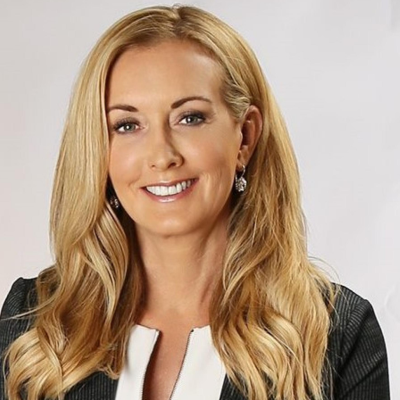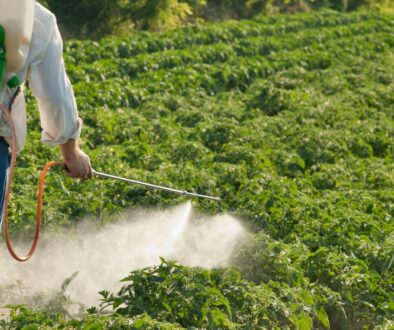USDA’s new $300 million for organic farming doesn’t go far enough, critics say
By Pam Strayer
The announcement this month that the U.S. Department of Agriculture (USDA) will provide $300 million in funding to support farmers transitioning from conventional agriculture to organic farming does not go far enough, according to organic industry advocates.
“For so many years consumers have driven the growth of organic, yet the dollars that our government deployed were insignificant in comparison to the support of traditional farming systems,” said Pam Marrone, who develops organic plant protection products referred to as “biopesticides.”
Marrone and other industry players said that while the funding is a step in the right direction, the dollar amount will do little to shift farmers away from a system that uses roughly 450,000 tons of pesticides on 390 million acres of conventional farms each year. “This equates to approximately 2.5-5 pounds of pesticides on every applied acre,” she said, adding that pesticides amount to about five percent of farm expenditures.
Advocates also say the U.S. must transition to organic faster for many more reasons: decreasing reliance on fossil fuel and synthetic fertilizer and getting away from depending on increasingly fragile foreign supply chains.
“Organic agriculture is a system that minimizes dependence on external resources in the farming system,” said Ricardo Salvador, director of the Food and Environment Program at the Union of Concerned Scientists. “So that means everything–the water, the soil, the nutrients, and the way that you manage weeds and the way that you manage pests. Farmers that adopt these methods are not going to be purchasing synthetic chemicals, pesticides, or fertilizers.”
A survey conducted by the Santa Cruz based Organic Research and Farming Foundation (OFRF), found that climate issues ranked high on a list of farmer concerns. Approximately 78% of surveyed farmers transitioning to organic cited enhanced resilience to climate change through organic practices as a motivating factor because organic practices enhance soil health with higher concentrations of organic matter, and organic soils typically retain water more efficiently.
“We believe that additional organic agricultural production will hasten the day when our food-transformed system gets to its net zero emissions future while also expanding now high-value opportunities for farmers, ranchers, and growers,” U.S. Secretary of Agriculture Tom Vilsack said in a statement announcing the Biden administration’s “Organic Transition Initiative.
In 2020, consumer demand drove organic market revenue to more than $61 billion, but roughly $25 billion of that comes from foreign imports, according to the Organic Trade Association. Overall the organic sector accounts for about 6 percent of the U.S. food market, with about 41 percent coming from imports.
“The organic industry has grown by overreliance on imports, as opposed to growing domestic supply,” said Errol Schweizer, a grocery retail consultant and former vice president of grocery at Whole Foods.
According to the USDA, organic sales continues to grow each year, driven in part by increasing demand from consumers under 25.
“Part of the impetus here was that the organic industry finally realized that having these supply chains that stretch across the world, particularly into eastern Europe, was going to impact organic supplies,” Schweizer said. “It’s really important to figure out how to address the issues that some farmers have had with the transition to organic.”
As Brise Tencer, executive director of the Organic Farming Research Foundation explained, “There is a lost opportunity for U.S. producers to be meeting more of our domestic demand. My hope is that some of these initiatives that the USDA is rolling out will help U.S. producers more easily make that transition into certified organic systems.”
“Some of the difficulty in the U.S. is institutional, in terms of how the U.S. food system is geared towards conventional monoculture,” Schweizer said. “It’s geared towards industrial scale production of commodity crops, including one third for ethanol and one third for animal feed for processing ingredients which are heavily subsidized. In contrast, the organic sector has been driven by consumer demand.”
“Consider that the Trump administration bailed out conventional farmers impacted by their trade policy to the tune of more than $50 billion. Compared to $300 million, that’s a drop in the bucket,” said Schweizer.
“The vast majority of the funding that the USDA puts into the food system, through subsidies and crop insurance, still goes to industrial food, GMO, and chemical intensive agriculture, and is primarily geared towards growing animal feed, ethanol, and other processed ingredients,” he continued. “So this is significant for the movement, but overall, it’s a very small percentage of what the USDA actually underwrites, relative to the US food system.”
Jay Feldman, executive director of the nonprofit Beyond Pesticides, says the USDA treats organic as “a side show.“
“The question is is $300 million enough given the existential crisis we’re facing in terms of public health threats from pesticides, biodiversity decline, and the climate crisis?” he asked. “Since the late 90s, we’ve moved from what was viewed as fringe agriculture to a marketplace that has recognition and labeling, and oversight and enforcement. We’ve seen the viability, the productivity, the profitability, the environmental benefits, and the protection of farmworkers and farmers. And therein lies the frustration that we’re still tinkering. We need to jump in both feet, with serious resources, and transition agriculture to organic. Anything short of that is not really meeting the crises. It’s rearranging the deck chairs on the Titanic essentially.”
Critics compared the USDA funding levels to the commitments the European Union (EU) is making, providing legal mandates that producers must meet under legally binding mandates. The EU Farm to Fork regulations require agriculture producers to reduce pesticide use by 50 percent and slash the use of synthetic fertilizers by 20 percent by 2030.
“They’re setting goals, getting off the pesticide treadmill, and shifting to a sustainable food system,” Schweizer said. “The EU is still light years ahead of the U.S. in terms of sustainability.”
One successful model for farmer to farmer assistance is a public-private partnership run by the Rodale Institute. The institute has been working with state officials to offer grants and provide technical assistance to farmers transitioning to organic, said Jeff Tkach, chief impact officer at Rodale. More than 300 farmers have taken part in the program in the past three years, he said. He hopes the USDA will support a similar model across all 50 states.




